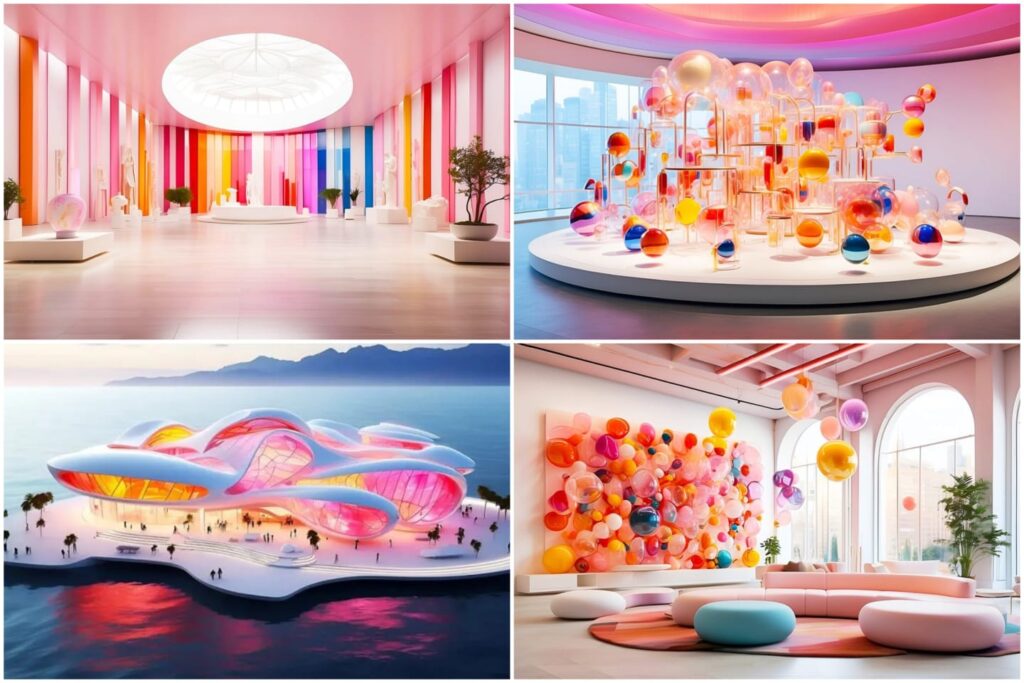The Floating Glass Museum: A Global Artistic Reminder for Climate Change and Awareness

The Floating Glass Museum: A Global Artistic Reminder for Climate Change and Awareness
It plans to make stops in major cities around the world, including Singapore, Dubai, Hong Kong, New York and Busan, each chosen for their unique encounters with climate change’s impacts, such as rising sea levels and severe weather events.
8 May 2024
By Ishika Kumar
In an era where the imprints of climate change are increasingly visible, the Floating Glass Museum emerges as a visionary node of art, architecture and advocacy. This innovative project, envisioned by the Italian architectural firm Luca Curci Architects, is designed not just as a repository of artistic endeavours but as a profound statement in the fight against global climate challenges.
It draws attention to the global crisis which we all face today, and which poses the greatest threat in the future, lurking behind us wherever we go.
Architectural Marvel Meets Environmental Message
From its inception, the Floating Glass Museum has been designed to captivate and educate. Crafted with Venetian glass, a hallmark of Italy’s rich artisan history, the museum combines age-old techniques with cutting-edge design, including assistance from artificial intelligence.
The museum’s structure is expected to traverse the globe, floating atop the very waters rising due to the warming climate.
Renderings of the museum reveal a mesmerising facade, with hues ranging from gentle pinks to fiery oranges, mimicking the beauty of natural waves. This aesthetic choice is deliberate, mirroring the subtle yet powerful shifts our planet undergoes as environmental conditions change. Within its 3,800 square feet of space, the museum will house a collection of paintings, glass art installations and carefully selected mid-century modern furniture, providing a serene environment for reflection on our planet’s future, inside and out. It is one very beautiful and unique structure.
A Mission Rooted in Sustainability
The museum’s mission is multifaceted, aiming to educate about climate change through the lens of art. It plans to make stops in major cities around the world, including Singapore, Dubai, Hong Kong, New York and Busan, each chosen for their unique encounters with climate change’s impacts, such as rising sea levels and severe weather events. By positioning itself in these locales, the museum not only brings attention to global issues but also underscores the local effects of these changes. Along the way, it challenges the practices leading to global warming and educates people about sustainability.
Luca Curci Architects, alongside collaborators Giulia Tassi Design and a global consortium of designers, have underscored the museum’s design with sustainability at its core. Their previous projects, like the ‘Vertical City – Zero-Energy City-Building’ and ‘THE LINK City-Forest,’ have already set a precedent for innovative, eco-conscious design, making the Floating Glass Museum a continuation of this philosophy.
A Catalyst for Dialogue and Action
The initiative goes beyond mere presentation; it seeks to catalyse dialogue and spur action. By visually and experientially linking the art within its walls to the broader narrative of climate change, the museum challenges visitors to contemplate their role in mitigating environmental degradation. It serves as a reminder that action is needed now more than ever, with scientists projecting sea levels could rise between one foot (0.3 metres) to an alarming eight feet (2.4 metres) by 2100 if current carbon emissions are not curbed.
A 2020 study published in the Climate and Atmospheric Science journal highlighted the urgency for coastal cities to prepare for significant sea level rises, potentially reaching up to 5 metres by 2300. The Floating Glass Museum, set to be completed later this year, embodies this pressing message by physically and symbolically floating above the challenge, urging a collective response from global citizens and policymakers alike.
Blending Tradition with Modernity
The Floating Glass Museum does more than just showcase art; it serves as a living example of how traditional practices can be seamlessly integrated with modern sustainability demands. Using Venetian glass, the museum not only celebrates this time-honoured craft but also propels it into the contemporary discourse on environmental and artistic innovation. It invites people to witness the alarm bells which people turn a deaf ear to, hoping now they don’t turn blind as well, pleading with stakeholders and citizens to be responsible and make conscious efforts to save the planet and keep its beauty intact.
In conclusion, the Floating Glass Museum is more than an architectural wonder; it is a mobilising force in the global dialogue on climate change. As it journeys from city to city, it will not just be displaying art but fostering a deeper understanding and appreciation for the interconnectedness of our global ecosystem and the pressing need to protect it. This floating museum stands as a beacon of hope and a call to action, floating literally on the frontlines of climate change and symbolically at the heart of the global conversation on sustainability.











